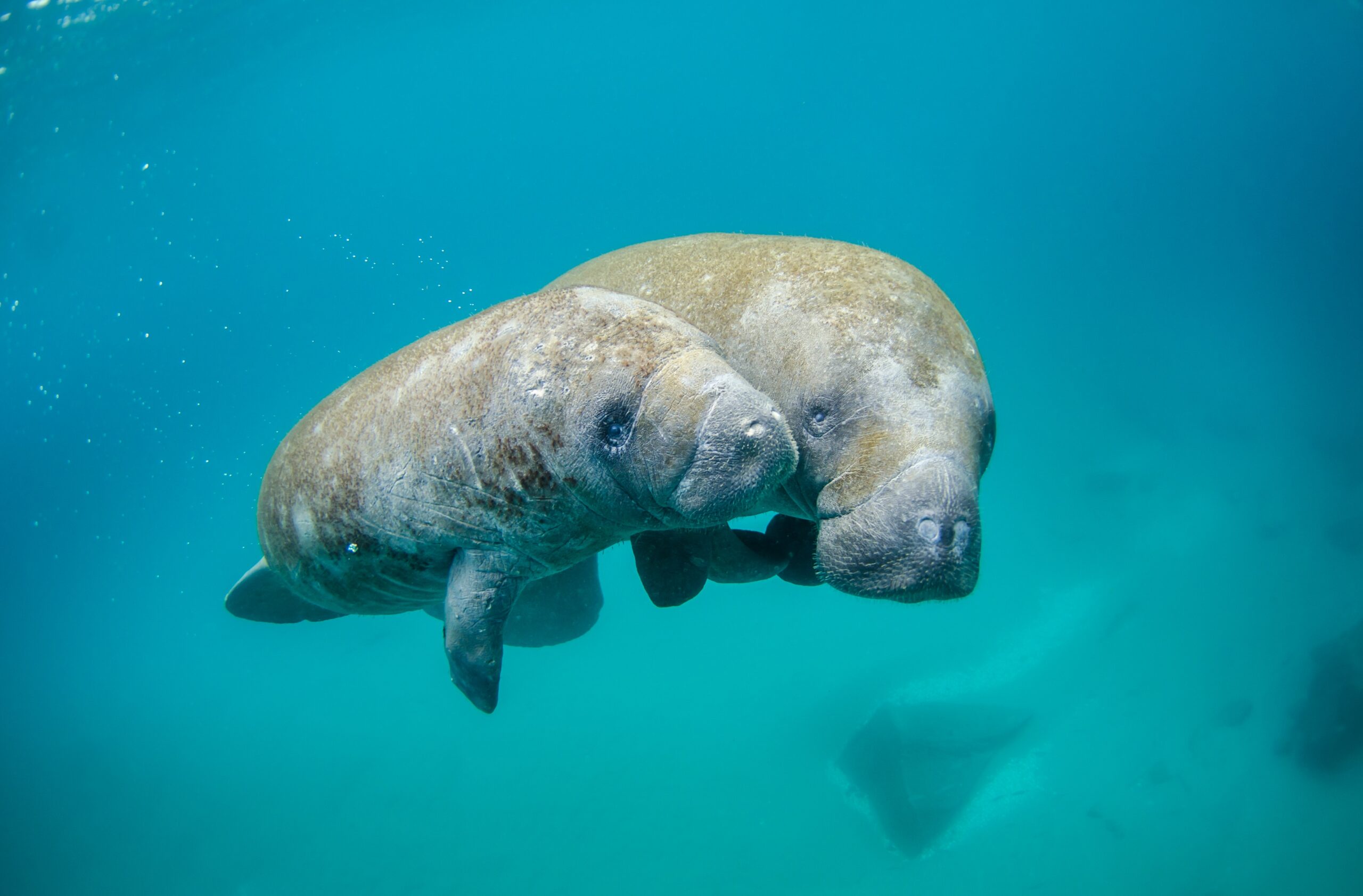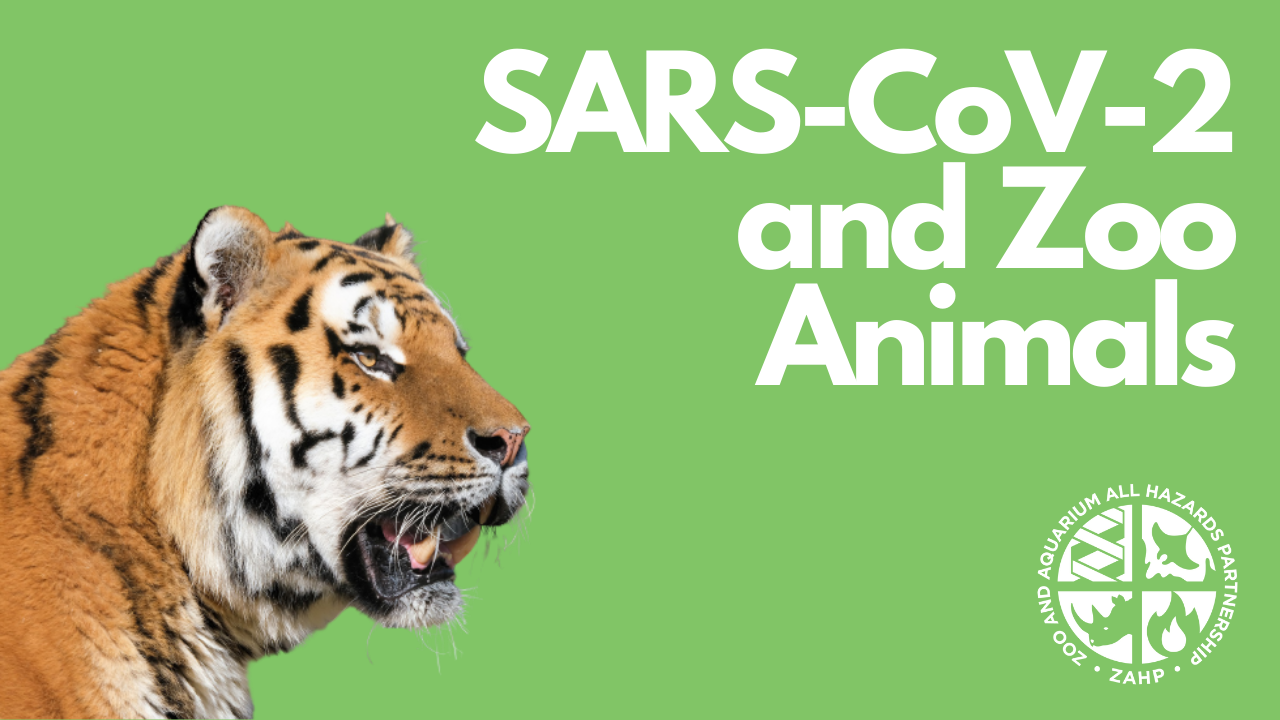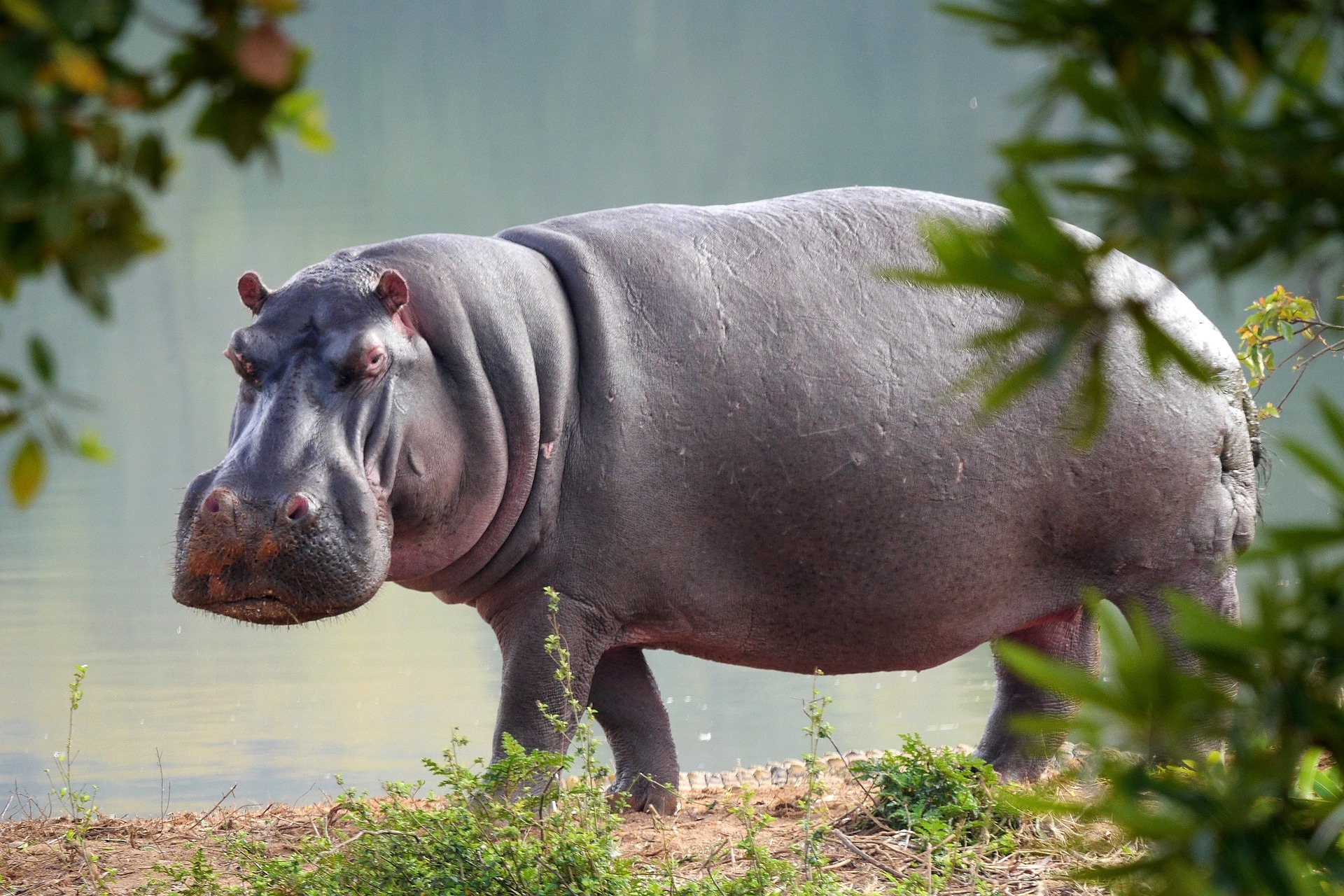Updated January 18, 2022
The SARS-CoV-2 pandemic has changed the way all of the exotic animal industry conducts business. The information and resources on this page have been compiled to help zoos, aquariums, and managed wildlife facilities prepare for continued impacts of the COVID-19 pandemic and address some of the most frequently asked questions. We are actively monitoring this situation and will provide additional information as it becomes available.
The understanding of how the virus affects various animal species is still largely unknown. As of December 3rd, 2021, cases of SARS-CoV-2 infection, or evidence of exposure via serosurveillance, have been confirmed in tigers, lions, puma, snow leopards, Canada lynx, jaguars, Asian small-clawed otters, gorillas, mink, white-tailed deer, ferrets, binturongs, fishing cats, coatimundi, spotted hyenas, hippopotamus, domestic cats, and dogs after contact with infected humans or animals.
A list of confirmed cases of SARS-CoV-2 in animals within the US is available on the USDA website; additional information on cases worldwide is available from the OIE.
In November 2021, the One Health Federal Interagency COVID-19 Coordination Group (OH-FICC) Wildlife and Zoos Subgroup, in collaboration with the Zoo and Aquarium All Hazards Partnership, released the COVID-19 Infection Prevention and Control Assessment Tool for Captive Wildlife Facilities. You can learn more about this tool and access it here.
Please see the CDC’s Guidance to Reduce the Risk of SARS-CoV-2 Spreading between People and Wildlife for additional information including considerations for wildlife rehabilitation facilities.
COVID-19 remains a primarily human pathogen, but our knowledge base continues to evolve rapidly. For the most up to date and reliable information please refer to the World Health Organization (WHO) and Centers for Disease Control and Prevention (CDC). Please refer to your state or local department of public health for additional information about plans and guidance for your area:
- CDC Directory of State and Territorial Health Department Websites
- Association of County and City Health Officials (NACCHO) directory of local public health departments (searchable by state)
Considerations
The following represents general considerations for the management of non-domestic species in human care. These considerations have been collated from various associations, subject matter experts, and taxon advisory groups (TAGs). Please note that these are only considerations. The actions taken by your facility or institution should be based on a thorough risk assessment of your collections, protocols, location and other factors that increase or decrease the risk of disease.
For more information on risk assessment, see Secure Zoo Strategy.
Generally Accepted Facts About COVID-19, the Disease Caused by the SARS-CoV-2 Virus (Last Updated 11/3/21)- This is a human health pandemic that likely originated from animal reservoirs in Wuhan, China in 2019.
- Humans can be infected with the virus, shed the virus, and may never show clinical signs of disease, or may have delayed on-set of a myriad of symptoms. Because of the highly variable presentation of disease, this makes it difficult to determine if the individuals most closely working with non-domestic species may or not be a risk to collections at a given time. Fully vaccinated humans can still become infected and spread this virus. This may be a critical risk factor for the infection of zoological species.
- Most common transmission of the virus from human to human remains the spread via respiratory secretions
- The ability of the COVID-19 virus to attach to mammalian cells and potentially cause infection seems to be dictated by the make-up of cellular receptors known as ACE2. A recent manuscript [1] in the Journal of Virology states “[the virus] likely recognizes ACE2 from pigs, ferrets, cats, orangutans, monkeys, and humans with similar efficiencies, because these ACE2 molecules are identical or similar in the critical virus binding residues.” The presence of ACE2 receptors is likely necessary to allow infection, but current studies have so far not explained the dose of viral units necessary to cause disease in many species.
- Due to the genetic similarity between humans and non-human primates (NHP) other great apes in addition to orangutans, are likely susceptible to this virus. This hypothesis appears to be valid, given the confirmed infection in gorillas in early January 2021.
- A manuscript [1] by Shi et al. found that in experimental conditions, the SARS-CoV-2 virus replicates poorly in dogs, pigs, chickens and ducks, but ferrets and cats are permissive of infection (under experimental conditions).
- It is the opinion of animal experts that related species may share similar receptor biology, and are presuming that all non-domestic animals of certain taxa may be susceptible. Additional research is needed.
- Bat species are known to be the host of many coronaviruses, and they have been implicated in one of many steps that likely resulted in the current virus circulating in the human population. This novel coronavirus may be able to circulate in certain bat species, and therefore may pose a risk to bats in human care.
- Mink have been implicated in the spread of SARS-CoV-2 back to farm workers. See the following link for more information about animals and COVID-19:
- https://www.cdc.gov/coronavirus/2019-ncov/daily-life-coping/animals.htm
[1] Shi, J., Wen, Z., Zhong, G., 2020. Susceptibility of ferrets, cats, dogs and other domesticated animals to SARS-coronavirus 2. Science 08 April 2020.
Taxon-Specific Considerations (Last Updated 11/3/21) Human health is the priority; however, steps that will keep humans safer during this time also protect animals in human care. Again, we reiterate: considerations and protocol changes should be made after a risk assessment of your facility, protocols, practices and animal species. Not all considerations will be necessary or appropriate based upon risk assessment. Links to taxonomic specific statements: Vaccination Considerations for the Experimental Use of the Zoetis Vaccine in Zoological Collections (Last Updated 11/3/21) Assessing Fitness of Staff Caring for Animals (Last Updated 11/3/21) [2] https://www.cdc.gov/coronavirus/2019-ncov/community/critical-workers/implementing-safety-practices.html Social Distancing (Last Updated May 2021) Personal Protective Equipment (PPE) (Last Updated 11/3/21) [3] https://www.cdc.gov/coronavirus/2019-ncov/prevent-getting-sick/diy-cloth-face-coverings.html Cleaning and Disinfecting (Last Updated 11/3/21) [4] https://www.cdc.gov/coronavirus/2019-ncov/prevent-getting-sick/prevention.html [5] https://www.aphis.usda.gov/aphis/ourfocus/animalhealth/emergency-management/ct_disinfectants COVID-19 Infection Prevention and Control Assessment Tool for Captive Wildlife Facilities (Last Updated 11/30/21) The COVID-19 Infection Prevention and Control Assessment Tool for Captive Wildlife Facilities: Zoos, Sanctuaries, Aquaria, and Wild Animal Rehabilitation Centers was developed by the One Health Federal Interagency COVID-19 Coordination Group (OH-FICC) Wildlife and Zoos Subgroup in collaboration with the Zoo and Aquarium All Hazards Partnership. This checklist provides a guide for baseline biosecurity measures and controls that should be in place to prevent transmission of SARS-CoV-2 between animals housed in captive wildlife facilities and people (including employees such as caretakers, maintenance staff, and other employees, volunteers, and the public) who may have direct or indirect contact with animals or their environment. This assessment tool is meant to be used by the administrator(s) in charge of infection prevention and control at the facility, occupational health, respiratory protection, human resources, veterinary staff, or facilities and maintenance. It is not meant to be an exhaustive list of considerations for preventing SARS-CoV-2 transmission, but a quick check of the minimum components of a biosecurity plan to ensure a baseline level of protection is in place. A layered approach using multiple strategies, including social distancing, personal protective equipment, hand hygiene, vaccination, and other items described in this list is recommended to reduce the spread of disease between people (whether working or visiting) and animals housed at these facilities. You can view and download the tool below. COVID-19 Infection Prevention and Control Assessment Tool for Captive Wildlife Facilities What to Do if You are Suspicious of a Case of Disease in a Non-Domestic Animal (Last Updated May 2021) If there is suspicion of a possible SARS-C0V-2 infection in an animal: NOTE: Laboratories running any animal tests at this time are animal specific labs, and are not diverting testing capacity from human health laboratories. [6] https://www.cdc.gov/coronavirus/2019-ncov/php/animal-testing.html Emerging Research on SARS-CoV-2 (Last Updated May 2021) New research on SARS-CoV-2 is being released rapidly. There are hundreds of research papers being generated during this crisis. Many have not yet undergone strict peer review to determine validity of results, and therefore must be interpreted with caution. For a searchable database of the most recent scientific publications visit Lit COVID, which is updated daily. Those searching for COVID-19 literature should recognize that knowledge about this virus is changing rapidly, and be aware that some studies are being released to the public before the peer review process is complete.
Recent COVID-19 News

Endangered Species COVID-19 Relief
May 31, 2023
Read The Article
Endangered Species COVID-19 Relief
May 31, 2023
Funding for eligible facilities that cared for native endangered and threatened species March 2020 – May 2021, and saw a decline in revenue due to COVID-19, is still available through a cooperative agreement between the Association of Zoos & Aquariums […]
Read The Article

APHIS Partners with Greenville Zoo on Serology Study
May 9, 2023
Read The Article
APHIS Partners with Greenville Zoo on Serology Study
May 9, 2023
The United States Department of Agriculture’s (USDA) Animal and Plant Health Inspection Service recently partnered with the Greenville Zoo as part of a larger Zoo and Aquarium Serology Study focused on SARS-CoV-2. A team of veterinarians from APHIS Veterinary Services […]
Read The Article

Identifying Zoo and Aquarium Species Susceptible to SARS-CoV-2: USDA APHIS Webinar Opportunity
January 25, 2022
Read The Article
Identifying Zoo and Aquarium Species Susceptible to SARS-CoV-2: USDA APHIS Webinar Opportunity
January 25, 2022
The U.S. Department of Agriculture’s Animal and Plant Health Inspection Service (APHIS) is seeking zoos and aquariums to participate in a study to identify animal species that may be susceptible to SARS-CoV-2. The study will also assess biosecurity practices used […]
Read The Article

Confirmation of COVID-19 in a Canada Lynx at a Pennsylvania Zoo
December 21, 2021
Read The Article
Confirmation of COVID-19 in a Canada Lynx at a Pennsylvania Zoo
December 21, 2021
On December 21, 2021, the United States Department of Agriculture’s (USDA) National Veterinary Services Laboratories (NVSL) announced confirmation of SARS-CoV-2 (the virus that causes COVID-19) in a Canada lynx at a zoo in Pennsylvania. This is the first Canada lynx […]
Read The Article

SARS-CoV-2 and Zoo Animals (Webinar Recording)
December 15, 2021
Read The Article
SARS-CoV-2 and Zoo Animals (Webinar Recording)
December 15, 2021
This webinar took place on December 8, 2021. This webinar was presented in partnership with the One Health Federal Interagency COVID-19 Coordination Group (OH-FICC) Wildlife & Zoos Subgroup. NOTE: As a disclaimer, while this webinar was publicly broadcast and is […]
Read The Article

Confirmation of COVID-19 in Hippos at a Belgian Zoo
December 8, 2021
Read The Article
Confirmation of COVID-19 in Hippos at a Belgian Zoo
December 8, 2021
On December 3, 2021, representatives from Antwerp Zoo in Antwerp, Belgium announced that two of their hippos tested positive for COVID-19 after runny nasal discharge was observed in the animals. Results were confirmed by the Sciensano National Veterinary Laboratory in […]
Read The Article
